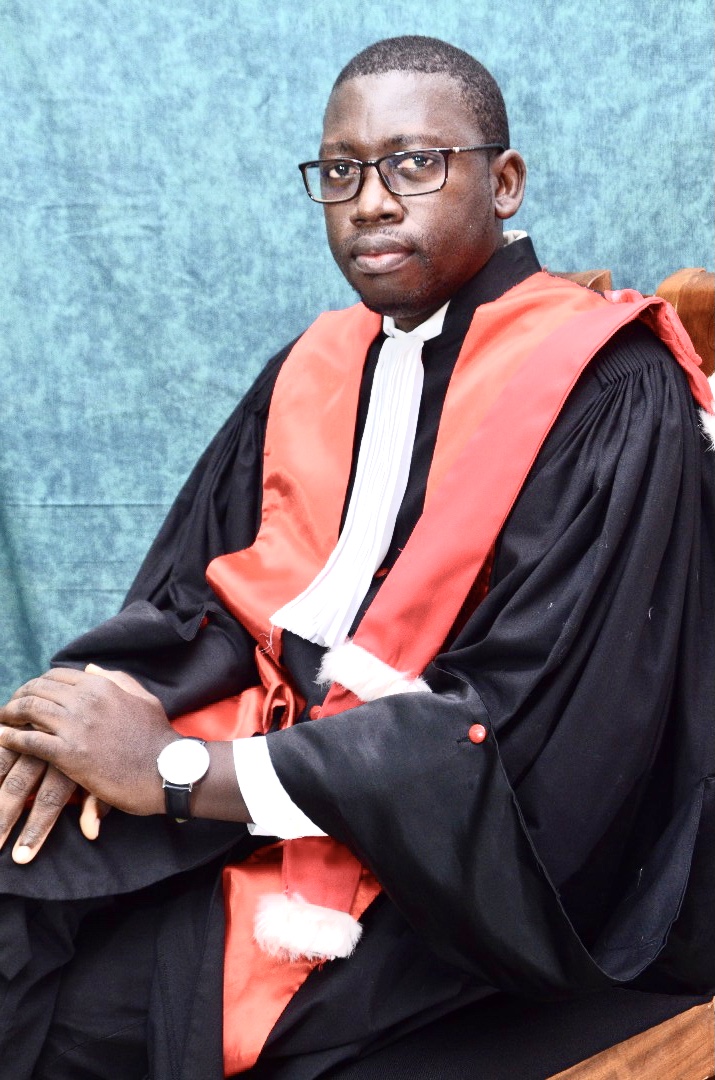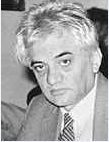Case Report
Hemichorea-Hemiballismus as A First Presentation of Diabetes: Basal Ganglia Involvement and Hba1c Threshold
1Department of Medicine, Milton Keynes University Hospital NHS Foundation Trust, Eaglestone, Milton Keynes, Buckinghamshire, UK.
2Department of Geriatric Medicine, Milton Keynes University Hospital NHS Foundation Trust, Eaglestone, Milton Keynes, Buckinghamshire, UK.
3Department of Medicine and HIV metabolic clinic, Milton Keynes University Hospital NHS Foundation Trust, Eaglestone, Milton Keynes, Buckinghamshire, UK.
4Honorary Senior Lecturer of the Faculty of Medicine and Health Sciences, University of Buckingham, UK.
*Corresponding Author: Mohamed H. Ahmed,Department of Geriatric Medicine, Milton Keynes University Hospital NHS Foundation Trust, Eaglestone, Milton Keynes, Buckinghamshire, UK.
Citation: Oddie-Okeke. C, Ahmed. M.H, Costa. J. (2025). Hemichorea-Hemiballismus as A First Presentation of Diabetes: Basal Ganglia Involvement and Hba1c Threshold, International Journal of Medical Case Reports and Reviews, BioRes Scientia Publishers. 5(2):1-5. DOI: 10.59657/2837-8172.brs.25.080
Copyright: © 2025 Mohamed Hassan Ahmed, this is an open-access article distributed under the terms of the Creative Commons Attribution License, which permits unrestricted use, distribution, and reproduction in any medium, provided the original author and source are credited.
Received: March 26, 2025 | Accepted: April 12, 2025 | Published: April 19, 2025
Abstract
We report a case of a 72-year-old woman who presented with a one-week history of abnormal, involuntary movements in her left upper limb. These movements were persistent throughout the day, occurring during both activity and sleep, and had progressively increased in intensity since onset. She also experienced weakness in the affected arm. Her past medical history included hypertension, managed with Amlodipine 5 mg once daily. On examination, she exhibited continuous, involuntary, flinging movements of the left arm, consistent with hemiballism. The rest of her neurological examination was unremarkable, and cerebellar signs could not be assessed due to the involuntary movements. Her blood pressure on admission was 202/81 mmHg. Random blood glucose was 27 mmol/L, with ketones at 0.8 mmol/L and serum osmolality at 285 mOsm/kg. She was managed as a case of hyperosmolar hyperglycemic state. Investigations showed an HbA1c of 18.6%. A head computed tomography (CT) revealed no intracranial abnormalities, while magnetic resonance imaging (MRI) showed tiny hypodensities in the left ganglio-capsular region and small hypointensities in the right ganglio-capsular area and this not stroke. Treatment with Risperidone successfully resolved the chorea. Her blood pressure and blood glucose were optimized, and she was discharged in stable condition. Hemichorea-hemiballismus as the first presentation of diabetes is extremely rare. Most case reports indicate an HbA1c of 12% or higher can be associated with hyperglycemia-induced hemichorea-hemiballismus (HIHH). Further research is needed to clarify the mechanisms underlying HIHH and to determine a definitive HbA1c threshold.
Keywords: hyperglycemic-induced hemichorea-hemiballismus (hihh); diabetes; hba1c
Introduction
Diabetic striatopathy, also known as non-kenotic hemichorea-hemiballismus (NKHH), is a basal ganglia syndrome characterized by movement disorders such as chorea and hyperglycaemia. It presents with distinctive neuroimaging features, including contralateral striatal hyper density on computed tomography (CT) or hyperintensity on T1-weighted magnetic resonance imaging (MRI). Although the prognosis is generally excellent, with full resolution possible through anti-hyperglycemic therapy alone or in combination with neuroleptic medications, some cases may be complicated by stroke, seizures, or cognitive and behavioral disturbances [1,2]. Several risk factors were identified such as Asian ethnicity, female sex, prolonged poor glycemic control, and concurrent diabetic retinopathy [1,2,3].
Basal ganglia involve in important process of glucose metabolism. For instance, GABAergic neurons in the substantia nigra pars reticulata (SNr) and globus pallidus (GP), key output nuclei of the basal ganglia, sense glucose via ATP-sensitive potassium (KATP) channels and other unknown mechanisms. SNr neurons modulate their firing rates based on blood glucose levels, influencing feeding-related processing. Glucose metabolism’s role in motor disorders includes GLUT1 mutations causing paroxysmal kinesigenic choreoathetosis, abnormal glycolysis in Huntington’s disease, and increased glucose metabolism in SNr and GP in Parkinson’s disease. While glucose is the brain’s primary energy source, its precise cellular utilization remains unclear, warranting further research into basal ganglia vulnerability in neurodegenerative diseases [3]. The hypothalamus regulates blood glucose, as shown by glycosuria following fourth ventricle damage in rabbits. Disrupted glucose sensing in the hypothalamus contributes to obesity and type 2 diabetes (T2D). Through the autonomic nervous system, it controls glucagon release via the sympathetic system (raising glucose) and insulin release via the parasympathetic system (lowering glucose). Circulating factors like glucose, insulin, and leptin influence hypothalamic neurons, impacting glucose homeostasis, food intake, energy use, and adiposity in type 2 diabetes [4]. In this case report we present a case of patient presenting with Hemichorea-hemiballismus presenting as a new diagnosis of diabetes.
Case report
The patient is a 72-year-old woman who presented with a one-week history of abnormal, involuntary movements of her left upper limb. These movements were persistent throughout the day, occurring during both activity and sleep, and had progressively increased in intensity since onset. She also experienced weakness in the affected arm. Her past medical history was significant for hypertension, managed with Amlodipine 5 mg once daily. On examination, she exhibited continuous, involuntary, flinging movements of the left arm, consistent with hemiballism. Muscle strength was 4/5 in the left arm and 5/5 in the right. The rest of her neurological examination was unremarkable, and cerebellar signs could not be assessed due to the involuntary movements. Her blood pressure on admission was 202/81 mmHg. Random blood glucose was 27 mmol/L, with ketones at 0.8 mmol/L, and serum osmolality at 285 mOsm/kg. She was managed as a case of hyperosmolar hyperglycemic state. She reported polyuria and polydipsia prior to admission, and her HbA1c was 18.6% (Table 1). A head CT showed no intracranial abnormalities, while an MRI revealed tiny hypodensities in the left ganglio-capsular region and small hypointensities in the right ganglio-capsular area on SWI images (figure 1 and figure 2) and this not stroke. During her hospital stay, the involuntary movements progressed to involve the left leg. She was started on Risperidone 500 mcg twice daily, and two days into treatment, the movements ceased. Although imaging did not fully explain the movement disorder, the neurology team suggested that chronic hyperglycaemia and poorly controlled hypertension might have caused her symptoms. Her blood pressure and blood glucose were optimized, and she was discharged in stable condition. She was followed up in the community and managed to achieve satisfactory control of her diabetes, with no further episodes of convulsions. Patient was consented for publication of the case report.
Figure 1: No acute intracranial pathology is demonstrated.
Figure 2: Tiny hypodensities are seen in the region of left ganglio-capsular region and tiny hypointensity seen in right ganglio-capsular region on SWI images
Table 1: List of summaries of plasma biochemistry tests
| Test | Value and normal reference range |
| Hb | 111 (110-150 g/L) |
| Urea | 9.5 mmol/L (2.5-7.5) |
| Creatinine | 97 mmol/L (reference range 1-12) |
| Glomerular filtration rate | 59 ml/min (> 90) |
| TSH | 1.25 pmol/L (0.34-5.6) |
| FT4 | 13.7 pmol/L (7.7-15.1) |
| CRP | 4.7 mg/L (0-6) |
| Anti-GAD antibody | Negative |
| Plasma osmolaity | 294 mmol/kg (275-295) |
| Urine Plasma osmolaity | 671 mmol/kg (300-900) |
| PH | 7.4 |
| Lactate | 1.5 mmol/L (< 2> |
| Glucose | 27 mmol /L |
| Plasma ketones | 0.8 mmol/L (<3> |
Discussion
The presence of hemichorea-hemiballismus (HC-HB) as the first presentation of diabetes is extremely rare. For instance, Pinsker et al. reported a 66-year-old female presenting with worsening right-sided choreiform and ballistic movements over two weeks, without a prior diagnosis of diabetes. Her serum glucose exceeded 600 mg/dL, with no ketones. CT and MRI revealed left basal ganglia abnormalities, consistent with hyperglycemia-related HC-HB. Symptoms resolved with the restoration of euglycemia, highlighting the importance of recognizing this reversible condition to exclude other intracranial pathologies [5]. Similarly, Sitburana and Ondo reported a 74-year-old woman with new-onset diabetes, sudden mild left hemiparesis, and marked left HC-HB, which was successfully treated with tetrabenazine. Brain CT and MRI showed right putamen and caudate lesions typical of hyperglycemia-induced hemichorea-hemiballismus (HIHH) [6]. Ifergane et al. also described three cases of HC-HB associated with new-onset diabetes [7]. Therefore, it is important to exclude diabetes mellitus in individuals presenting with HC-HB.
Various case reports have documented associations between different HbA1c levels and HC-HB. For instance, Tsai et al. reported an HbA1c of 14.6% in a case of HIHH [8]. Other studies have shown associations with HbA1c values of 10.8%, 11.1%, 13.4%, 15.3%, >14%, 12.4%, 12.1%, 14%, 12.2%, 13%, 14%, and 14.8%, respectively (1,9-19). In our patient, the HbA1c was 18.6%. Therefore, we postulate that an HbA1c of 12% or more may increase the risk of developing HIHH. Further systematic reviews and meta-analyses are needed to determine a definitive HbA1c cutoff. In our case, risperidone completely resolved the chorea. Various medications have been used to treat HIHH. For example, Enes Silva used levetiracetam to control seizures in a patient with HIHH (1), while Sitburana and Ondo used tetrabenazine [6]. Safan et al. demonstrated that low-dose haloperidol can also be effective in managing HIHH [20].
Conclusion
In individuals presenting with hemiballistic or choreic movements, diabetes mellitus should be considered as a potential underlying cause. Those with an HbA1c of 12% or higher may be at increased risk of developing HIHH. Further research is necessary to elucidate the mechanisms underlying HIHH, and systematic reviews or meta-analyses may help establish a definitive HbA1c threshold. This knowledge is crucial for stroke physicians and neurologists in identifying patients at high risk for HIHH.
Declarations
Acknowledgments
We are grateful for all the team in the stroke ward (ward 7) in Milton Keynes University Hospital for their unlimited cooperation.
Funding Statement
None to declare.
Conflict of Interest
None to declare.
Informed Consent
Informed consent for publication of this case report was obtained from the patient.
Author Contributions
Conception and design: all authors. Administrative support: all authors. Provision of study materials or patients: all authors. Collection and assembly of data: all authors. Data analysis and interpretations, manuscript writing, and final approval of manuscript: all authors.
Data Availability
The authors declare that data supporting the findings of this study are available within the article.
References
- Enes Silva J, Esteves JMM, Ferreira AI, Dias C. (2021). Non-ketotic hemichorea-hemiballismus presenting as generalised tonic-clonic convulsive state in uncontrolled diabetes. BMJ Case Rep, 14(2):e240083.
Publisher | Google Scholor - Chatterjee S, Ghosh R, Biswas P, Das S, Sengupta S, Dubey S, Ray BK, Pandit A, Benito-León J, Bhattacharjee R. (2024). Diabetic striatopathy and other acute onset de novo movement disorders in hyperglycemia. Diabetes Metab Syndr, 18(3):102997
Publisher | Google Scholor - Yamada K. (2009). [Glucose metabolism in the basal ganglia]. Brain Nerve, 61(4):381-8.
Publisher | Google Scholor - Pan S, Worker CJ, Feng Earley Y. (2023). The hypothalamus as a key regulator of glucose homeostasis: emerging roles of the brain renin-angiotensin system. Am J Physiol Cell Physiol, 325(1):C141-C154.
Publisher | Google Scholor - Pinsker JE, Shalileh K, Rooks VJ, Pinsker RW. (2015). Hemichorea-Hemiballism Secondary to Non-Ketotic Hyperglycemia. J Clin Med Res, 7(9):729-730.
Publisher | Google Scholor - Sitburana O, Ondo WG. (2006). Tetrabenazine for hyperglycemic-induced hemichorea-hemiballismus. Mov Disord, 21(11):2023-2025.
Publisher | Google Scholor - Ifergane G, Masalha R, Herishanu YO. (2021). Transient hemichorea/hemiballismus associated with new onset hyperglycemia. Can J Neurol Sci, 28(4):365-368.
Publisher | Google Scholor - Tsai, L., Shekhtman, B., Stenquist, R. et al. (2022). Hemiballismus–hemichorea syndrome in an acute rehabilitation setting: two case reports. J Med Case Reports, 398.
Publisher | Google Scholor - Carrion DM, Carrion AF. (2013). Non-ketotic hyperglycaemia hemichorea-hemiballismus and acute ischaemic stroke. BMJ Case Rep, bcr2012008359.
Publisher | Google Scholor - Hsiao PJ, Kuo CC, Kuo TY, Kao YH, Chan JS, Lin YY, Chen MH, Chen JS, Chuu CP. (2019). Investigation of the relationship between non-ketotic hyperglycemia and hemichorea-hemiballism: A case report. Medicine (Baltimore), 98(28):e16255.
Publisher | Google Scholor - Dixit, A. (2024). Nonketotic hyperglycemia hemichorea and hemiballismus: a case report. J Med Case Reports, 18:154.
Publisher | Google Scholor - Chaudhari P, Sawant R, Karwa V, Raut SS, Acharya S, Kumar S. (2024). Revealing Non-ketotic Hyperglycemia as a Trigger for Hemichorea-Hemiballismus in Uncontrolled Diabetic Asthmatics: A Case Report. Cureus, 16(3):e55678.
Publisher | Google Scholor - Evers Smith CM, Chaurasia KK, Dekoski DC. (2022). Non-ketotic Hyperglycemic Hemichorea-Hemiballismus: A Case of a Male with Diabetes Mellitus and Speech Disturbances. Cureus, 14(5):e25073.
Publisher | Google Scholor - Bhagwat NM, Joshi AS, Rao G, Varthakavi PK. Uncontrolled hyperglycaemia: a reversible cause of hemichorea-hemiballismus. BMJ Case Rep, bcr2013010229.
Publisher | Google Scholor - Faust TF, Reitzel J, Khan A, Cail GM, Quansah R. (2024). Hyperglycemia-Induced Complete Left-Sided Hemiballismus Due to Uncontrolled Diabetes in a 70-Year-Old Female: A Case Report. Cureus, 16(1):e53220.
Publisher | Google Scholor - Bizet J, Cooper CJ, Quansah R, Rodriguez E, Teleb M, Hernandez GT. (2014Chorea, Hyperglycemia, Basal Ganglia Syndrome (C-H-BG) in an uncontrolled diabetic patient with normal glucose levels on presentation. Am J Case Rep, 15:143-146.
Publisher | Google Scholor - Salem A, Lahmar A. (2021). Hemichorea-Hemiballismus Syndrome in Acute Non-ketotic Hyperglycemia. Cureus, 13(10):e19026.
Publisher | Google Scholor - Lopes J, Antunes E, Oliveira B, Gomes V, Caridade S. (2023). Hyperglycemic Hemichorea: A Case Report. Cureus, 15(5): e39240.
Publisher | Google Scholor - Rani KA, Ahmed MH, Dunphy L, Behnam Y. (2016). Complex Partial Seizure as a Manifestation of Non-Ketotic Hyperglycemia: The Needle Recovered from Haystack? J Clin Med Res, 8(6):478-479.
Publisher | Google Scholor - afan AS, Sharma O, Almasri M, D'Souza AI, Suliman O. (2022). Is diabetic striatopathy the culprit of seizures in a patient with ketotic hyperglycemia-induced hemichorea-hemiballismus? BMC Neurol, 22(1):133.
Publisher | Google Scholor

















